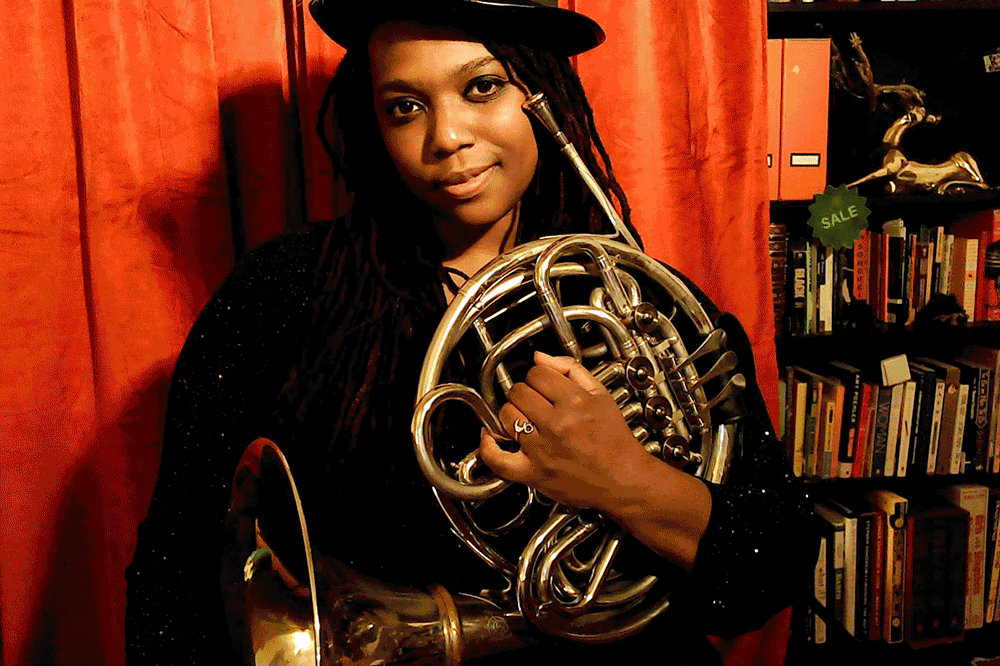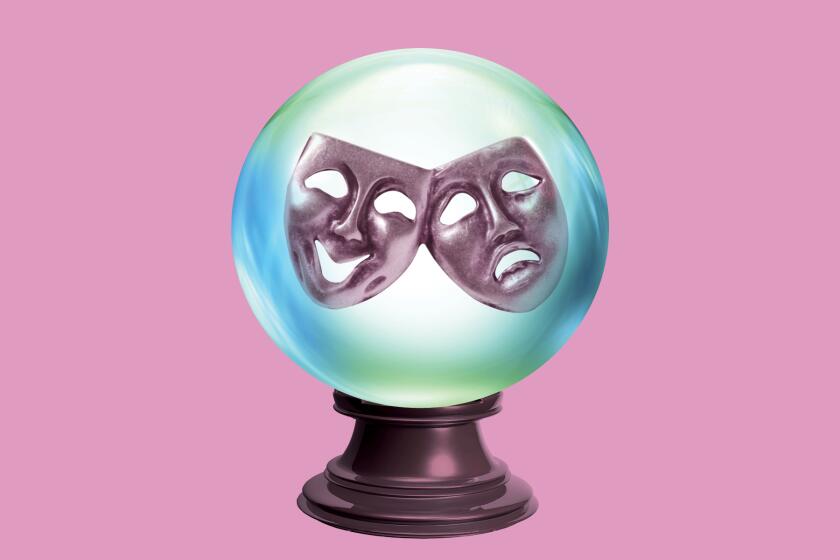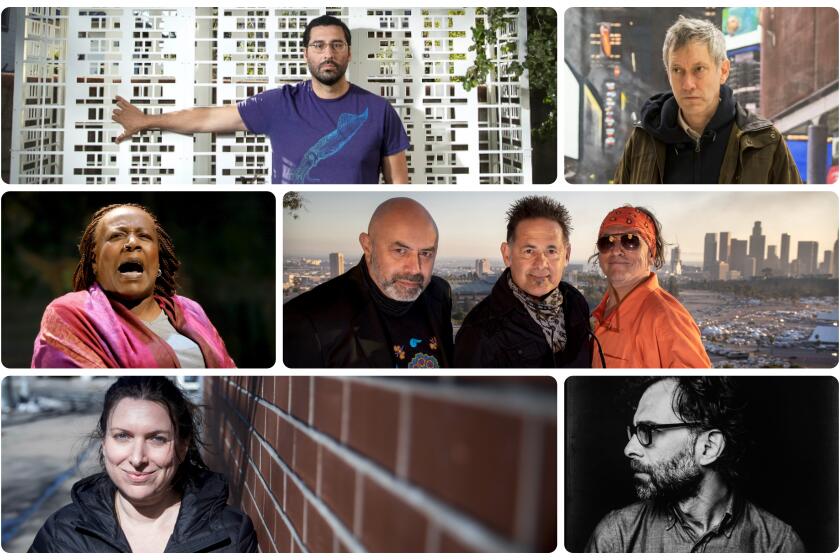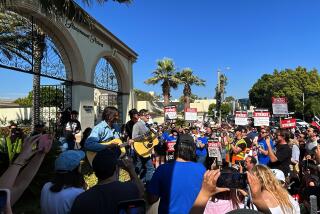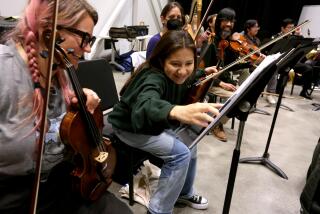There are tough choices facing cash-strapped musicians. An L.A. gig artist explains
- Share via
Within a two-hour span in March one year ago, Corinne Olsen lost all her gigs for the month.
Soon enough, cancellations started on her April jobs, and by mid-April, her entire calendar for 2020 was gone.
The L.A.-based freelance viola player is part of what she and others call the “Freeway Philharmonic” — an eclectic contingent of classical musicians in Southern California who drive from regional orchestra to orchestra and hopes that no two concerts happen to be scheduled for the same time.
Violinist Melissa Tong landed her dream job playing a Broadway musical. Then the pandemic became the ultimate showstopper. She’s one of 11 classical musicians from both coasts who share their stories of struggle, survival and hope.
She cobbles together her living by playing these concerts as well as gigs with community and church groups. She enjoys playing with rock bands (her website bio says she’s a rock star trapped in a classical musician’s body), and she teaches private lessons over Zoom.
Is my health and safety worth the $200 to play a half-hour at a wedding?
— Corinne Olsen, viola
An entire year of COVID-19 pandemic closures has body-slammed musicians like her, she says, making any kind of meaningful work almost impossible to find. Unemployment was difficult to qualify for, since she had a variety of W-2s and 1099s, and the W-2s, no matter how small, could prevent her from qualifying for aid. She eventually began receiving about $100 per week, plus an additional $600 per week coronavirus relief benefits.
She knew the extra government help would dry up quickly (it expired at the end of July and was later renewed for half as much), so she tucked away enough to sustain her through more lean times.
Over the summer, a few one-off jobs began cropping up here and there. The problem was that they were often attended by people not wearing masks.
“Is my health and safety worth the $200 to play a half-hour at a wedding?” she asks.
In December, the coordinator for a Christmas church gig she had performed at for years surprised her by telling her that she could wear a mask but that members of the congregation might not. Fearing for her safety, she backed out.
“I knew musicians who did the gigs because they needed the money,” Olsen says. “It’s constantly seeing how seemingly expendable we are to the public.”
As the one-year anniversary of the COVID-19 pandemic arrives, we want to hear from Angelenos in the theater industry about what life has been like since.
These days, she is frustrated by those who say they have no plans to get vaccinated against COVID-19 but still want concerts to come back.
Olsen finds a certain dry irony in the fact that she finished grad school with a master’s in music performance during the Great Recession of 2008 and that a little over a decade later, just as she felt her career was entering a promising new phase, the pandemic hit.
The World Health Organization announced the coronavirus outbreak had become a pandemic on March 11, 2020. Since then, the virus has seemingly touched all aspects of life in Southern California and beyond. The Times looks back on a full year of life in a pandemic.
“Is the universe really going to line this up that every 10 years you have this great work stoppage and it’s not your fault?” she asks, lamenting that even as vaccination rates rise, live music indoors could be among one of the last things to return.
Olsen, 38, looks forward to the day she can get vaccinated. Even if that doesn’t immediately bring back work, she jokes, at least then “maybe my gym will be open and I can go punch things.”
Daniel Fish, Culture Clash, Dael Orlandersmith, Richard Maxwell, Annie Dorsen and Lars Jan reveal much loss — but also see a way forward.
More to Read
The biggest entertainment stories
Get our big stories about Hollywood, film, television, music, arts, culture and more right in your inbox as soon as they publish.
You may occasionally receive promotional content from the Los Angeles Times.
